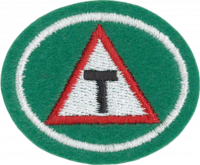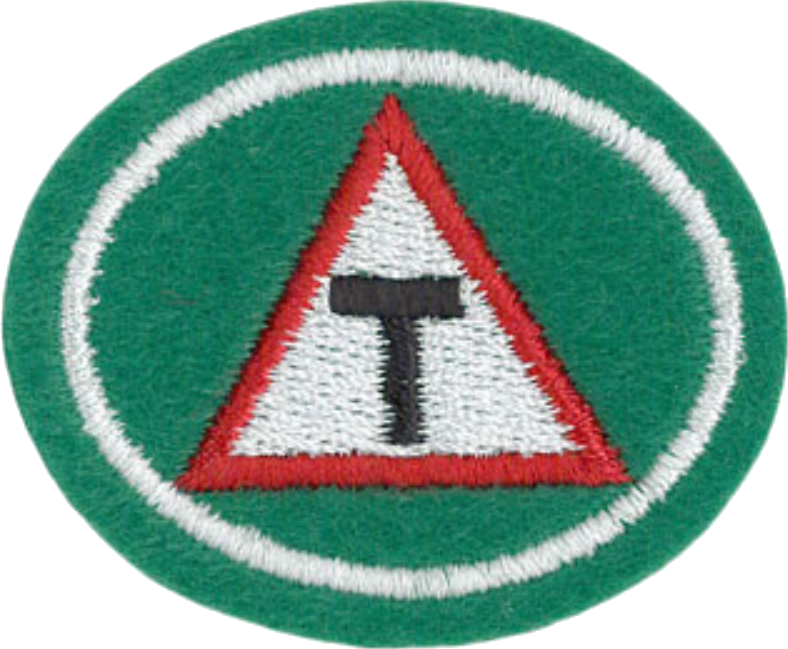AY Honors/Triathlon/Answer Key
1
- How many of you have ever heard: When I was your age, I walked to school, uphill, both ways, in the snow. These days, in general, there is less physical activity than in generations past.
Bible Principles
For physical training is of some value, but godliness has value for all things, holding promise for both the present life and the life to come.
Do you not know that your body is a temple of the Holy Spirit, who is in you, whom you have received from God? You are not your own; you were bought at a price. Therefore honor God with your body.
So whether you eat or drink or whatever you do, do it all for the glory of God.
Spirit of Prophecy:
- from Adventist Home, 263." In many cases the sickness of children can be traced to errors in management. Irregularities in eating, insufficient clothing in the chilly evening, lack of vigorous exercise to keep the blood in healthy circulation, or lack of abundance of air for its purification, may be the cause of the trouble. Let the parents study to find the causes of the sickness and then remedy the wrong conditions as soon as possible.
- from Adventist Home, 493: It is the privilege and duty of Christians to seek to refresh their spirits and invigorate their bodies by innocent recreation, with the purpose of using their physical and mental powers to the glory of God.
- from Education, 207: Recreation, when true to its name, re-creation, tends to strengthen and build up. Calling us aside from our ordinary cares and occupations, it affords refreshment for mind and body, and thus enables us to return with new vigor to the earnest work of life.
- from Ministry of Healing, 238: Inactivity is a fruitful cause of disease. Exercise quickens and equalizes the circulation of the blood, but in idleness the blood does not circulate freely, and the changes in it, so necessary to life and health, do not take place. The skin, too, becomes inactive. Impurities are not expelled as they would be if the circulation had been quickened by vigorous exercise, the skin kept in a healthy condition, and the lungs fed with plenty of pure, fresh air. This state of the system throws a double burden on the excretory organs, and disease is the result.
2
A short research project.
3
3a
Stretching, warming up and cooling down were once thought to aid injury prevention during exercise. However, the research does not bear this out.
There is some evidence that warming up and cooling down might help to reduce muscle soreness after exercise, even if they don’t prevent injuries. Stretching can be part of your overall warm-up and cool-down routine. Some also find psychological benefits in stretching and warming up to put them in the right frame of mind for exercise or to help them relax after exercise.
Warm-ups if five to 10 minutes will gradually warm your muscles and body temperature. Use the major muscle groups that will be used in your sporting activity.
Your warm-up could include low intensity activity such as brisk walking or jogging. Stretching should be performed once the muscles have been warmed, as the stretching of cold muscles is less effective.
In the last five minutes of exercise, slow down gradually to a light jog or brisk walk. Remember to stretch the same major muscles used for 5 to 10 minutes after your activity to assist recovery. This helps to reduce muscle soreness and stiffness.
Training using different styles of exercise can help prevent injury by not overdoing one group of muscles. Remember to drink lots of water.
3b
- (If you already train regularly, all the notes here are moot, otherwise, here are some thoughts).
- It is often said: If you fail to plan, you plan to fail.
- You should take the time to sit down and create a training schedule.
- Sit down with a calendar and determine on which days of the week you can put time aside for your training.
- You should train on a different sport each day. For example, swim one day, rest the next day, bike the next, rest the next, and run on the following day. I think that's five days, right? You've probably earned a rest until the next week.
- Don't forget to ease into a training program, especially if you have not had a regular training program.
- Commit yourself to this schedule, and follow it.
- And do not forget to: Enjoy!
3c
Here are some thoughts on the equipment you may need to get you to the finish line.
There are variations in Triathlons
Some triathlons are Canoe/kayak, mountain bike, and run, with various distances.
Essential equipment for the kayak leg includes a kayak or sea kayak (or any canoe for the beginner) paddle, lifejacket (you will not be able to compete without one), helmet if needed, and sun-glasses.
For the Swim
- Swimsuit — A snug-fit suit will reduce drag in the water. This can be a standard swimsuit or you can get a specialized tri suit which also has bike-type shorts and a form-fitting top which you can wear through the entire race.
- Goggles — Make sure they fit well and allow you to see.
- Swim Cap — Usually the race provides this, however you may want one when you train.
- Wetsuit — (Optional, unless you train or race in cold water). A wetsuit helps keep you warm and buoyant and preserves some of your energy for the rest of the race.
- Lubricant — (Optional). Lubricants helps when removing the wetsuit. It also prevents chafing from clothing. (Petroleum-based products such as Vaseline can degrade wetsuit material and are therefore not recommended.)
- Anti-Fog Solution or Spray — (Optional but works wonders to keep your goggles from fogging up, especially in cold water).
For the Bike
- Bike — A road bike's lighter frame and narrower tires will be faster than a mountain bike, but lots of first-timers use whatever kind of bike they have.
- Shoes — These can be your running shoes used with toe clips on your pedals or rigid biking shoes with cleats that attach to the pedals. Stiffer soled bike shoes deliver more power to your pedal stroke and can prevent your feet from going numb as you ride.
- Helmet — Any approved bike helmet that fits. You will need one.
- Sunglasses — Protects your eyes from glare and grit on the road.
- Bike Gloves — For short (sprint-distance) races you can omit these to save time. Your hands probably won't feel the difference. It is nice to have on longer rides.
- Shirt — You may already be in your swimsuit or the top you wore in the swim. You may like to have a dry shirt on in cooler conditions.
- Bike Shorts — (Optional). You may wear a tri suit which has a thin pad for the entire race.
- Socks — (Optional). Cotton will cause blisters.
- Water Bottles — One, two. Depends on the distance and the temperature.
- Bike Pump — Attach one to your bike's frame.
- Spare Tube/Patch Kit — Keep in a small under-seat bag. Nothing is more frustrating than standing on the sidelines during a race with no way to fix your tire. You will also need to know how to fix a flat or change your tire.
- Bike Computer — (Optional). Nice to have to keep track of distance, time and speed.
For the Run
- Running Shoes — You can also add speed laces to save time.
- Socks — You will likely want socks for the run to prevent blisters.
- Sun Hat — Shade your face.
- Race Belt — (Optional). Allows you to attach your race number quickly after the bike leg.
For the canoe/kayak
- Aqua Shoes (or any shoe)
- Helmet
- Life jacket
- Canoe/kayak (sea kayak is best)
- Paddle
- Cold weather gear (if competing in cold weather)
For Transitions
- Towel — To dry off as well as to wipe your feet off between the swim and biking.
- Gels, Bars, Sports Drink — Keep nearby when you bike ride and run.
- Sunscreen — Apply before the bike or run so that you do not burn.
- Day Pack or Duffel Bag — You need to carry your stuff, right?
Other Gear to Consider
- Sports Watch — (Optional). This does not have to be expensive helps you with training and pacing.
- Heart Rate Monitor — (Optional). Helps keep you within your target heart-rate zone when you train.
4
- Review, as needed.
For tips and instruction see Cycling.
For tips and instruction see Cycling - Advanced.
For tips and instruction see Swimming - Beginner.
For tips and instruction see [[AY Honors/Swimming - Advanced Beginner/en|]].
For tips and instruction see Swimming - Intermediate.
For tips and instruction see Swimming.
For tips and instruction see Swimming - Advanced.
It is outside the scope of this answer key to tell you how to run properly other than to say you need to work up your endurance over time by training.
5
5a
- That's 546 yards (or so, for the non-metric folks).
5b
- That's 9.32 miles (for the non-metric folks).
5c
- That's 6.21 miles (for the non-metric folks).
5d
- YOU can do it!
There are several types/distances in triathlons:
- The shortest is a sprint which has a 1/2-mile swim, 15-mile ride, 3.1-mile run. (800-m swim, 24.1-km ride, 5-km run)
- The next is Olympic distance with a 1-mile swim, 30-mile ride, 6-mile run. (1600-m swim, 48.2k-m ride, 10-km run)
- Half-ironman.
- Hawaii's famous (and grueling) IronmanTM with a 2.4-mile swim, 112-mile ride, 26.2-mile run. (3862-m swim, 180-km ride, 42.195-km run)
- Invercargill New Zealand's Wai Tri gets competitors from all over NZ. Triathlon: Kayak (5km), Mtb (15km), Run (7.8km). Check out a more detailed description in the equipment section. Duathlon: Mtb (15km), Run (7.8km). Novice / Schools : Mtb (3.9km), Run (3.9km). The distances can vary year to year.
References
- Pages using DynamicPageList3 parser function
- AY Honors/Prerequisite/Cycling/en
- AY Honors/See Also/Cycling/en
- AY Honors/Prerequisite/Cycling - Advanced/en
- AY Honors/See Also/Cycling - Advanced/en
- AY Honors/Prerequisite/Swimming - Beginner/en
- AY Honors/See Also/Swimming - Beginner/en
- AY Honors/Prerequisite/Swimming - Advanced Beginner/en
- AY Honors/See Also/Swimming - Advanced Beginner/en
- AY Honors/Prerequisite/Swimming - Intermediate/en
- AY Honors/See Also/Swimming - Intermediate/en
- AY Honors/Prerequisite/Swimming/en
- AY Honors/See Also/Swimming/en
- AY Honors/Prerequisite/Swimming - Advanced/en
- AY Honors/See Also/Swimming - Advanced/en
- Missing Localization/All/Triathlon AY Honor.png/en
- Missing Localization/All/Sportsman/en
- Missing Localization/Honors/Swimming - Advanced Beginner/en


